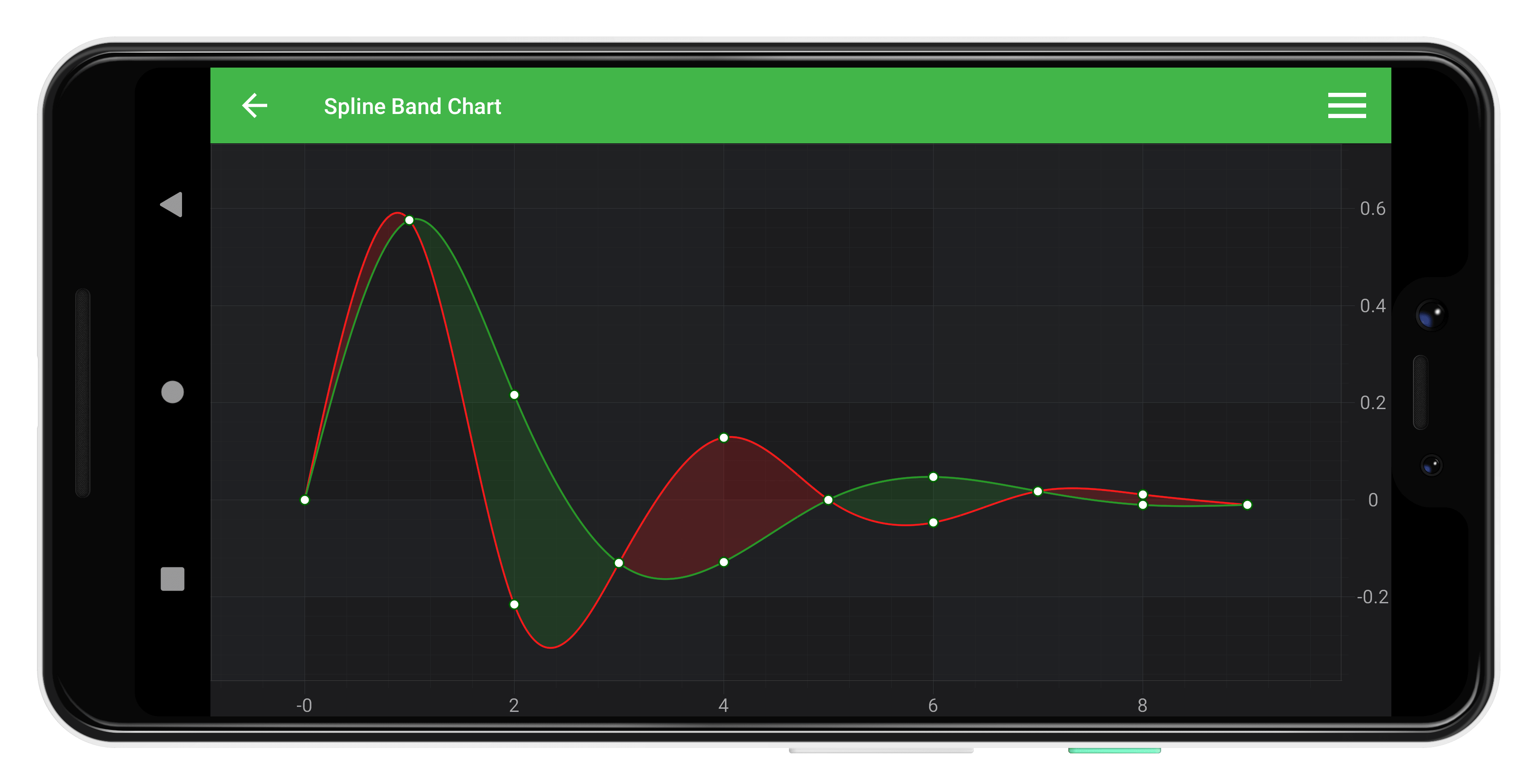Android Chart - Examples
SciChart Android ships with ~90 Android Chart Examples which you can browse, play with, view the source-code and even export each SciChart Android Chart Example to a stand-alone Android Studio project. All of this is possible with the new and improved SciChart Android Examples Suite, which ships as part of our Android Charts SDK.
The algorithms for smoothing the charts data or creating a spline series are commonly used when showing all raw data is not efficient. This might be the case when the raw dataset is so large that it does not gives meaningful insights to the pick and trends. In contrast the smoothed lines will provide a great user experience to the customers of your Android charting application. That is why we have created the Spline Line, Spline Mountain and Spline Band series for SciChart Android API.
This example demonstrates how to create a Spline Band Series for Android applications in Java using SplineBandRenderableSeries type. Spline High-Low Fill or Spline Band Series are provided by the SplineBandRenderableSeries type. This accepts data in a triplet form (X, Y1, Y2) and renders two lines with a polygon, which changes color depending on whether Y1>Y2 or vice versa. The flexible Spline Band series API allows to specify Fill, FillY1 brushes and Stroke, StrokeY1 pens. You can also add point markers onto this series.
Read more in the SciChart Android Spline Band Series documentation.
See also: Spline Mountain Series and Spline Line series.
The full source code for the Android Spline Band Series example is included below (Scroll down!).
Did you know you can also view the source code from one of the following sources as well?
- Clone the SciChart.Android.Examples from Github.
- Or, view source and export each example to an Android Studio project from the Java version of the SciChart Android Examples app.
- Also the SciChart Android Trial contains the full source for the examples (link below).


